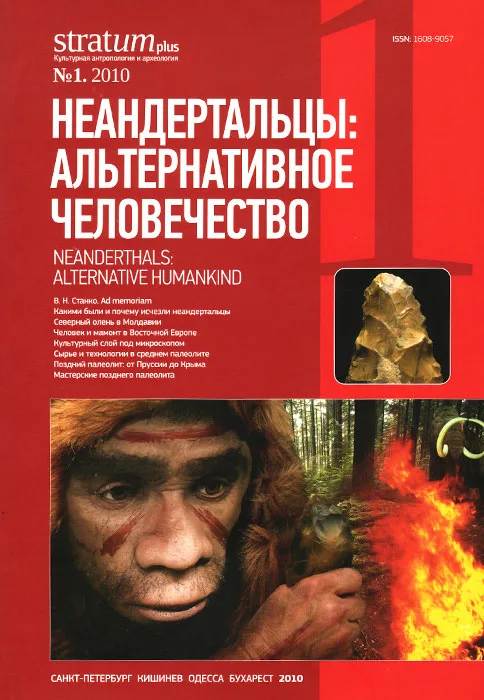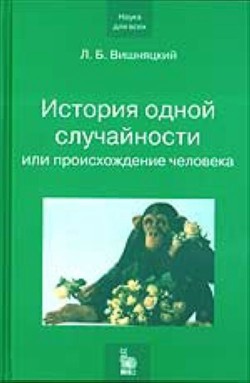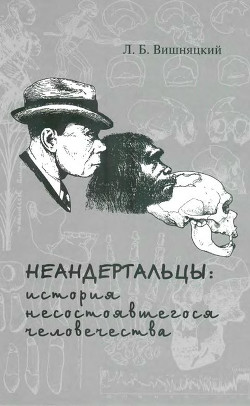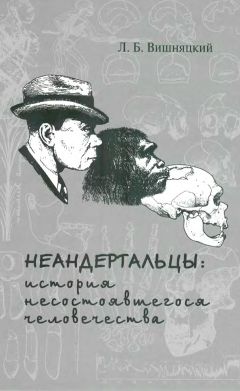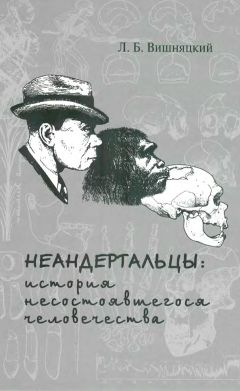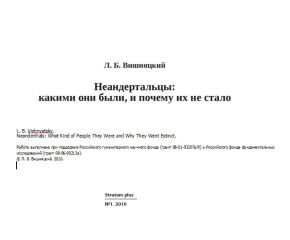life history.
Proceedings of the National Academy of Sciences of the USA 16, 13764–13768.
Rampino M. R. and S. Self. 1992. Volcanic winter and accelerated glaciation following the Toba super-eruption. Nature 359, 50–52.
Richards M., K. Harvati, V. Grimes, C. Smith, T. Smith, J.-J. Hublin, P. Karkanas, E. Panagopoulou. 2008. Strontium isotope evidence of Neanderthal mobility at the site of Lakonis, Greece using laser-ablation PIMMS. Journal of Human Evolution 35, 1251–1256.
Rogers A. R., D. Iltis, S. Wooding. 2004. Genetic variation at the MC1R locus and the time since loss of human body hair. Current Anthropology 45, 105–108.
Rolland N. 2004. Was the emergence of home bases and domestic fire a punctuated event? A review of the Middle Pleistocene record in Eurasia. Asian Perspectives 43, 248–280.
Rosas A., M. Bastir, C. Martínez-Maza, A. García-Tabernero, C. Lalueza-Fox. 2006. Inquiries into Neanderthal craniofacial development and evolution: “accretion” versus “organismic” models. In: Harvati K. and T. Harrison (eds.). Neanderthals Revisited: New Approaches and Perspectives. Dordrecht: Springer, 37–69.
Royer D. F., C. A. Lockwood, J. E. Scott, F. E. Grine. 2009. Size variation in early human mandibles and molars from Klasies River, South Africa: Comparison with other Middle and Late Pleistocene assemblages and with modern humans. American Journal of Physical Anthropology 140, 312–323.
Rushton J. P. 1997. Race, Evolution, and Behavior: A Life History Perspective. 2nd ed. New Brunswick, NJ: Transaction Publishers.
Sawyer G. J. and B. Maley. 2005. Neanderthal reconstructed. The Anatomical Record 283B, 23–31.
Schmitz R. W. 2006. The discovery of fossil man in the 18th and 19th century. In: Schmitz R.W. (ed.). Neanderthal 1856–2006. Mainz am Rhein: Verlag Philipp von Zaibern, 9–16.
Semendeferi K., H. Damasio, R. Frank, G. W. van Hoesen. 1997. The evolution of the frontal lobes: a volumetric analyses based on three dimensional reconstructions of magnetic resonance scans of human and ape brains. Journal of Human Evolution 32, 375–388.
Shen G., W. Wang, H. Cheng, R. L. Edwards. 2007. Mass spectrometric U-series dating of Laibin hominid site in Guangxi, southern China. Journal of Archaeological Science 35, 2109–2114.
Speth J. D. and E. Tchernov. 2001. Neandertal Hunting and Meat-Processing in the Near East: Evidence from Ke-bara Cave (Israel). In: Stanford C. B. and H. T. Bunn (eds.). Meat-Eating and Human Evolution. Oxford: Oxford University Press, 52–72.
Størmer F. C. and I. Mysterud. 2006. Cave smoke: air pollution poisoning involved in Neanderthal extinction? Medical Hypotheses 66, 723–724.
Tattersall I. 1995. The Last Neanderthal. The Rise, Success, and Mysterious Extinction of Our Closest Relatives. New York: Macmillan.
Tattersall I. 2006. Neanderthal skeletal structure and the place of Homo neanderthalensis in European hominid phylogeny. Human Evolution 21, 269–274.
Thieme H. 1997. Lower Palaeolithic hunting spears from Germany. Nature 385, 807–810.
Thieme H. 2005. The Lower Palaeolithic art of hunting. The case of Schöningen I 3 II–4, Lower Saxony, Germany. In: Gamble C. and M. Porr (eds.). The hominid individual in context. Archaeological investigations of Lower and Middle Palaeolithic landscapes, locales and artifacts. New York: Routledge, 115–132.
Trinkaus E. 1997. Appendicular robusticity and the paleobiology of modern human emergence. Proceedings of the National Academy of sciences of the USA 94, 13367–13373.
Trinkaus E. 2005. Early modern humans. Annual Review of Anthropology 34, 207–230.
Underdown S. 2008. A potential role for transmissible spongiform encephalopathies in Neanderthal extinction. Medical Hypotheses 71, 4–7.
Voisin J.-L. 2006. Speciation by distance and temporal overlap: a new approach to understanding Neanderthal evolution. In: Harvati R. and T. Harrison (eds.). Neanderthals Revisited: New Approaches and Perspectives. Dordrecht: Springer, 299–314.
Weaver T. D. and C. C. Roseman. 2008. New developments in the genetic evidence for modern human origins. Evolutionary Anthropology 17, 69–80.
Weaver T. D. and K. Steudel-Numbers. 2005. Does climate or mobility explain the differences in body proportions between Neandertals and their Upper Paleolithic successors? Evolutionary Anthropology 14, 218–223.
Weaver T. D., C. C. Roseman and C. B. Stringer. 2007. Were neandertal and modern human cranial differences produced by natural selection or genetic drift? Journal of Human Evolution 53, 135–145.
Williams M. A. J., S. H. Ambrose, S. van der Kaars, C. Ruehlemann, U. Chattopadhyaya, J. Pal, P. R. Chauhan. 2009. Environmental impact of the 73 ka Toba super-eruption in South Asia. Palaeogeography, Palaeoclimatology, Palaeoecology 284, 295–314.
Wynn T. and F. L. Coolidge. 2004. The expert Neandertal mind. Journal of Human Evolution 46, 467–487.
Zilhão J. 2006. Neandertals and moderns mixed, and it matters. Evolutionary Anthropology 15, 183–195.
Zollikofer C. P. E., M. S. Ponce de León, B. Vandermeersch, F. Lévêque. 2002. Evidence for interpersonal violence in the St. Césaire Neanderthal. Proceedings of the National Academy of Science of the USA 99, 6444–6448.
Zubrow E. 1989. The demographic modelling of Neanderthal extinction. In: Mellars P. and C. Stringer (eds.). The Human Revolution. Behavioral and Biological Perspectives on the Origins of Modern Humans. Edinburgh: Edinburgh University Press, 213–231.
Вишняцкий Леонид Борисович (Санкт-Петербург, Россия). Доктор исторических наук. Институт истории материальной культуры РАН (ИИМК РАН).
Leonid Vishnyatsky (St.-Petersburg, Russia). Doctor of historical sciences. History of Material Culture Institute, Russian Academy of Sciences.
Leonid Vishnyatsky (S.-Petersburg, Rusia). Doctor în ştiinţe istorice. Institutul de istorie a culturii materiale, Academia de Ştiinţe a Rusiei.
E-mail: paleo@lv8699.spb.edu.
© Л. Б. Вишняцкий, 2010.
Работа выполнена при поддержке Российского гуманитарного научного фонда (грант 08-01-93207а/К) и Российского фонда фундаментальных исследований (грант 08-06-00213а).
Study supported by the Russian Humanitarian Research Foundation (grant nr. 08-01-93207а/К) and Russian Fundamental Research Foundation (grant nr. 08-06-00213а).
Studiul dat este realizat cu suportul Fundaţiei ruse pentru cercetări umanistice (grant no. 08-01-93207а/К) și Fundaţia rusă pentru cercetări fundamentale (grant no. 08-06-00213а).
О некоторых, впрочем, можно хотя бы строить догадки. Например, в 1853 г. Ф. Спринг, профессор физиологии льежского университета, описал человеческие кости, найденные в одной из пещер близ Намюра в Бельгии. Кости были столь ветхими, что буквально рассыпались в руках. Говоря о черепе, Спринг отметил покатый лоб и необычайно большую носовую полость, и отнес его к некоей вымершей расе (Schmitz 2006: 13). Может быть, на самом деле льежский профессор
